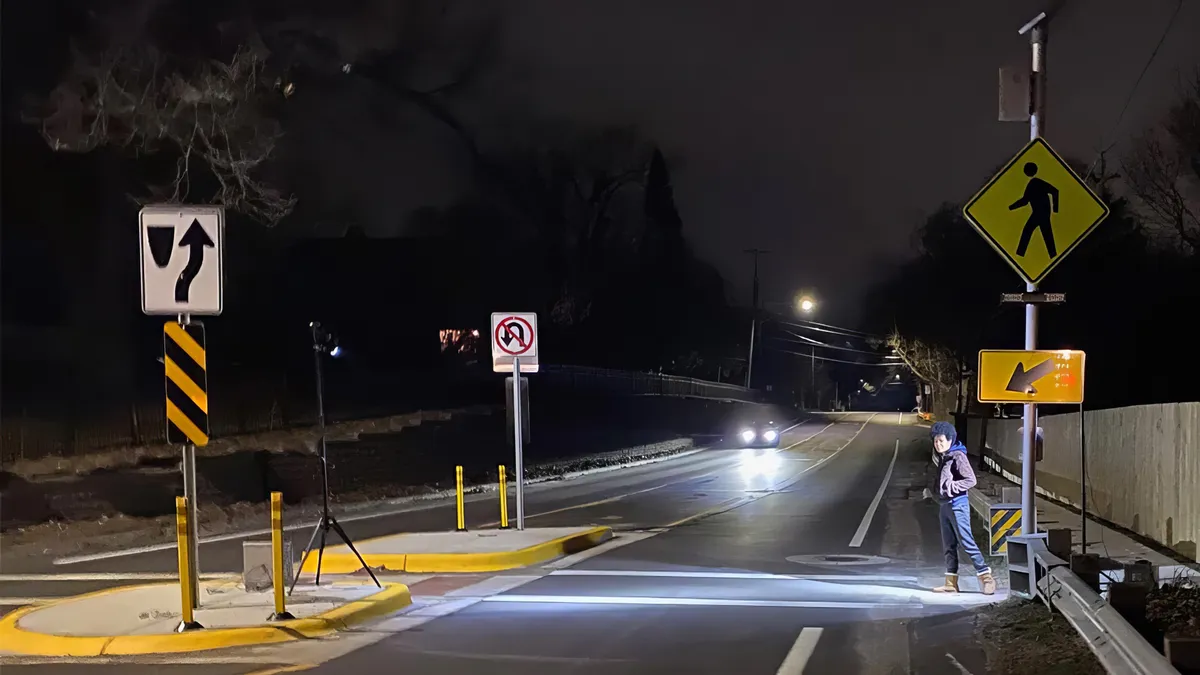Dive Brief:
- On unlit streets, motorists are more than three times as likely to yield to nighttime pedestrians at illuminated crosswalks than at dark ones, according to a new study from the Insurance Institute for Highway Safety.
- Researchers from IIHS and Western Michigan University studied the effect of crosswalk illuminators, which are LED floodlights that shine horizontally across the street, at four intersections in Kalamazoo, Michigan.
- At these intersections, none of which had traffic signals, researchers found that drivers slowed where flashing beacons or any type of lighting were present, but a combination of flashing beacons and crosswalk lighting triggered by the pedestrian resulted in the highest yielding behavior.
Dive Insight:
More than 7,300 pedestrians died in traffic collisions in the U.S. last year, according to preliminary data from the Governors Highway Safety Association. Pedestrian fatalities were 14.1% higher than in 2019, and the death toll soared 77% from 2010 to 2022. Nighttime is the most dangerous time for pedestrians: in 2022, 78% of deaths occurred at night, according to the GHSA.
“Solutions aren’t always complicated,” said IIHS President David Harkey in a statement. “We can stop pedestrians from being killed if we make sure drivers see them — but first city planners and road designers have to see the light.”
The researchers went to two dimly lit T-shaped intersections and a dimly lit four-way intersection with a 30 mph speed limit. At those locations, drivers were more likely to slow more than 10 mph when crosswalk lighting was present. At another dimly lit site equipped with flashing beacons and triggered crosswalk lighting, drivers were more than 13 times as likely to yield to pedestrians, compared with no added lights. At the remaining site, where the speed limit was 25 mph and the mid-block location was brightly lit, there was no statistically significant difference in driver response with the addition of crosswalk lighting.
Prior research found that flashing beacons get the attention of drivers but don’t help them see pedestrians, IIHS said in a press release. “The combination of [flashing beacons] with crosswalk lighting presumably accomplishes both goals — though that’s something that needs to be confirmed with further research at additional sites,” IIHS states.












